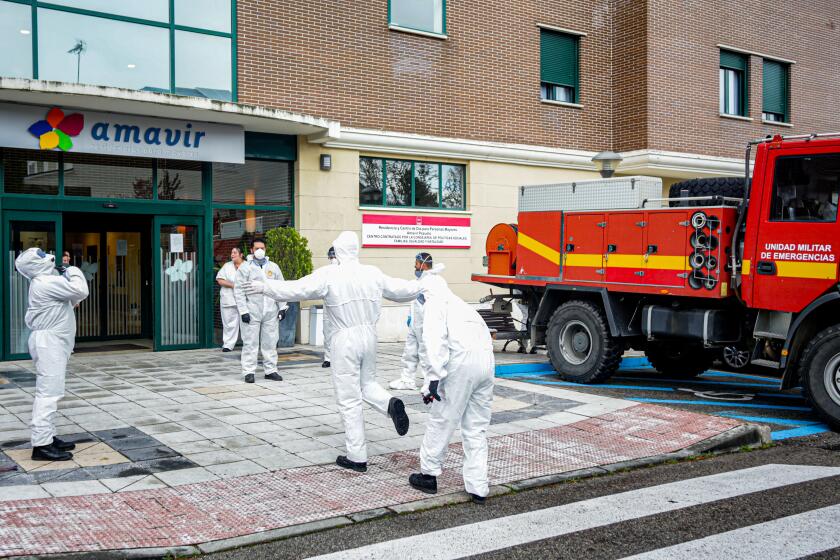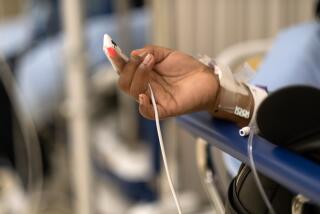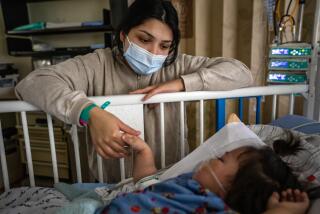Amid coronavirus outbreak, the daily terrors of improvising in a makeshift ICU in Spain
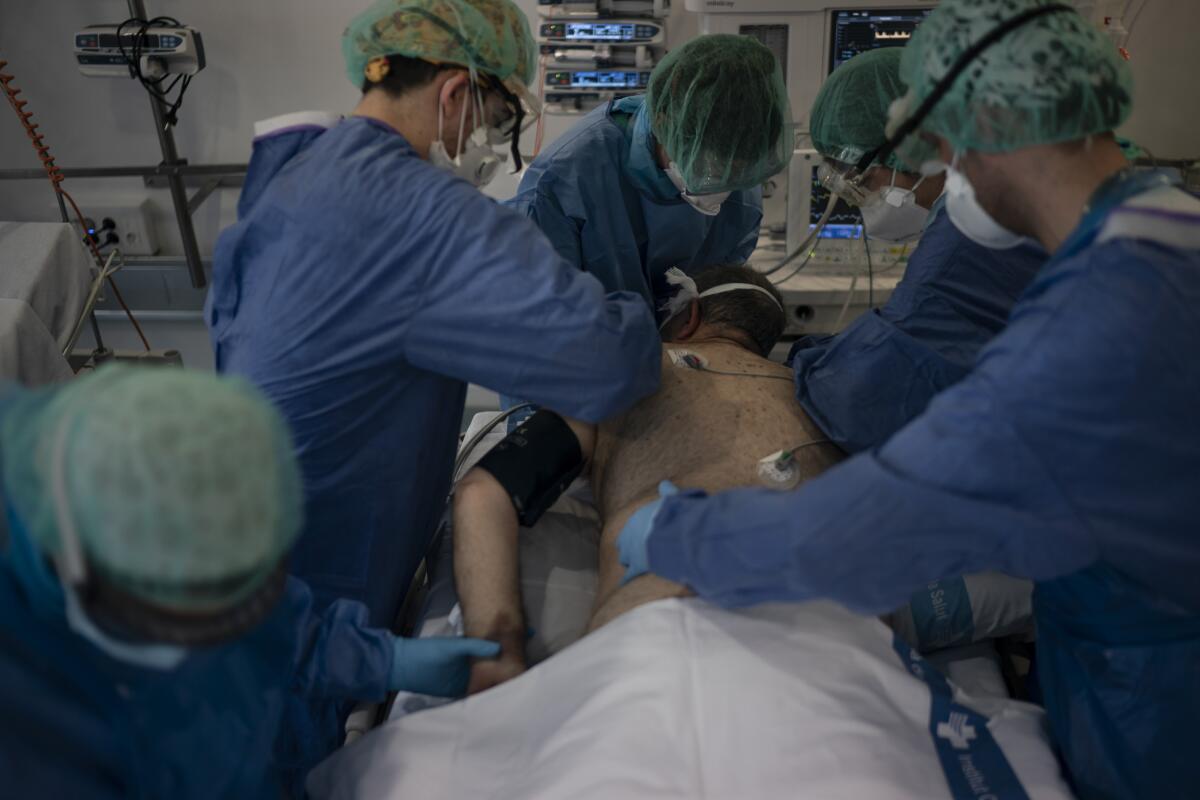
- Share via
BADALONA, Spain — The tension is palpable. There is no nonessential talking. An orchestra of medical monitors marks the tempo with an endless series of soft, distinct beeps.
Never have so many people been inside the library of the Germans Trias i Pujol hospital in northeastern Spain. But the healthcare workers in improvised protective gear aren’t consulting medical books. Instead, they’re treating patients in critical condition suffering from pneumonia caused by the coronavirus.
From the outside, this makeshift intensive-care unit in Badalona, near Barcelona, looks nothing like a library. The bookshelves have been removed to make room for up to 20 hospital beds, breathing machines and an array of medical equipment after the longstanding ICU and other areas of the hospital were flooded with COVID-19 patients.
Spanish soldiers disinfecting elder care facilities found the bodies of several residents left in their beds.
With the scarcity of full-body protective suits across Spain, doctors and nurses are employing what they can find, reusing masks, layering oversized surgical gowns with plastic aprons and running through an infinite number of latex gloves.
Like scuba divers, they apply a small dose of detergent to their goggles just before stepping into the sweltering, virus-laden room in the hopes of mitigating the inevitable fogging of their eye protection caused by their own breathing.
They’ll be at it for hours, racing from patient to patient, sweating under all the layers.
A team of journalists enters the room to document the work, but their presence is barely noticed. Health workers remain focused on their essential tasks — monitoring vitals, administering medication, manipulating the tubes and cords connecting the patients to a plethora of machines.
Most patients are intubated and hooked up to ventilators. About half have been flipped onto their stomachs to ease pressure on their lungs and help their breathing. Nurses acknowledge that this is not a hopeful sign.
As Spain sees the rate of infections slowly stabilize, it continues logging a high daily number of deaths. More than 10,000 people have died in Spain thus far.
The patients in this makeshift ICU will likely spend weeks in the hospital before their battle with the virus is won or lost. They fight for life without their loved ones, who are unable to visit them.
Nurses on the other side of the glass observe their movements, typing away on computers. Communicating on walkie-talkies, those inside give them the latest developments: “37.8 C” — 100 degrees Fahrenheit. One of the patients has a fever again. Medication is then injected into the IV bag.
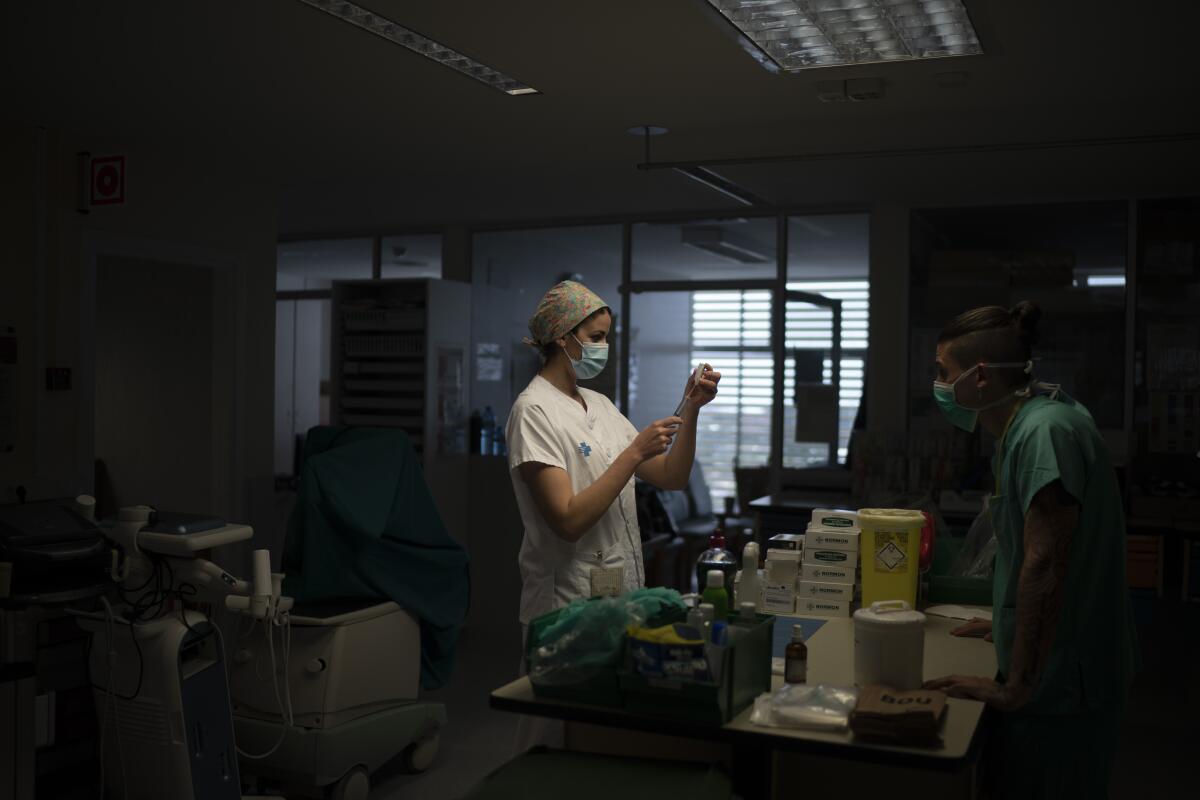
Time floats, and not just because the nurses are unable to see their watches from behind their foggy goggles.
As one person’s shift ends, the laborious process of leaving the ICU begins. Nurses exit via a designated door and remove their now-contaminated armor, one piece at a time. Goggles go into one bucket, gowns in another. The outer layer of gloves and aprons is thrown into the trash.
A weight is lifted off their shoulders as they leave the ICU behind. But another weight takes its place in the form of a haunting question: Will the virus follow them home?
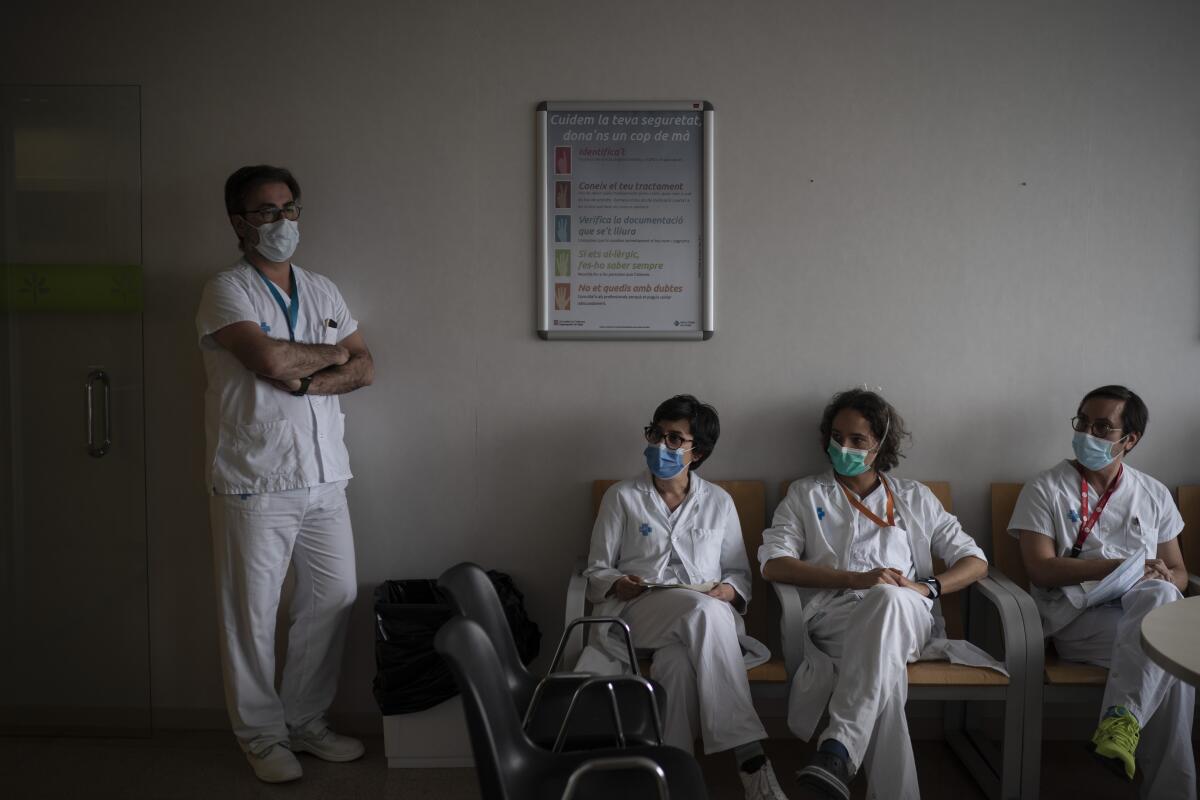
More to Read
Sign up for Essential California
The most important California stories and recommendations in your inbox every morning.
You may occasionally receive promotional content from the Los Angeles Times.
